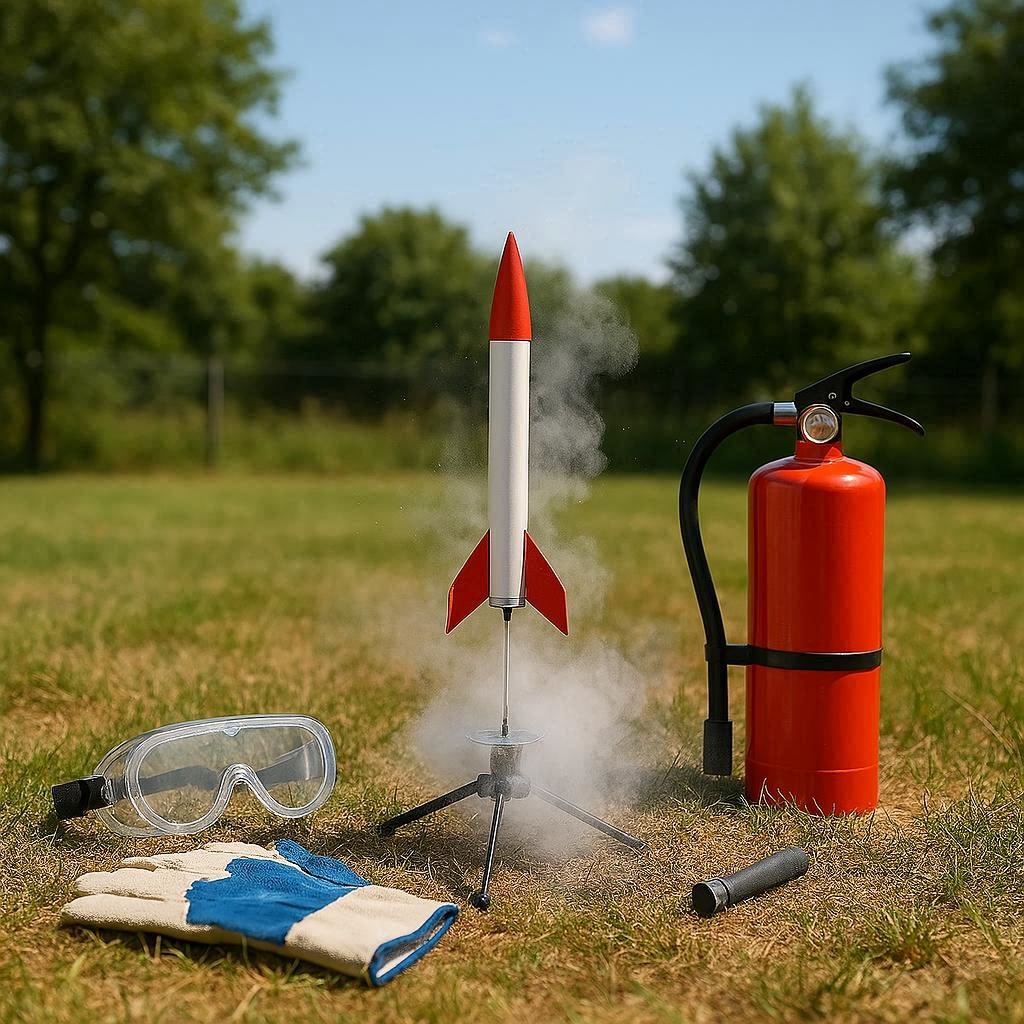Are you ready to embark on a fun and exciting DIY adventure that’s perfect for backyard experiments, science fairs, or just plain old family fun? Look no further! Today, we’re going to dive into the world of straw rocket launchers—simple, inexpensive, and packed with big fun for all ages. Whether you’re a parent looking for a creative activity to share with your kids or a science enthusiast seeking a hands-on project, this guide will walk you through everything you need to know to build your very own straw rocket launcher.
Why Build a Straw Rocket Launcher?
Before we jump into the nitty-gritty of building your straw rocket launcher, let’s take a moment to explore why this project is such a great idea. For starters, it’s an excellent way to introduce kids (and adults!) to the basics of physics and engineering. The principles behind the rocket’s propulsion—air pressure, force, and motion—are fundamental concepts that can spark a lifelong interest in STEM fields (Science, Technology, Engineering, and Math).
Moreover, this project is incredibly cost-effective. You likely have most of the materials lying around the house, making it an accessible activity for anyone. It’s also a fantastic way to spend quality time with family or friends, fostering creativity and teamwork. And let’s not forget the sheer excitement of watching your homemade rocket soar through the air—there’s no shortage of fun in this project!
Materials Needed
The best part about building a straw rocket launcher is that it requires minimal materials, most of which you probably already have at home. Here’s a list of what you’ll need:
- Plastic straw (the larger the straw, the more powerful the launch)
- Balloons (latex balloons work best)
- Cardboard or cardstock (for the rocket body)
- Scissors
- Glue or hot glue gun
- Tape (duct tape works well)
- Ruler or measuring tape
- Pencil or marker
- A clean, empty plastic bottle (2-liter or 1.5-liter)
- Optional: decorations (markers, paint, stickers, etc.)
Step-by-Step Instructions
Now that we’ve covered the materials, let’s dive into the step-by-step process of building your straw rocket launcher. Don’t worry if you’re not a DIY expert—this project is straightforward and can be completed in just a few hours.
Step 1: Prepare the Rocket Body
The first step is to create the body of your rocket. For this, you can use a piece of cardboard or cardstock. If you’re using cardboard, you can cut it into a long, narrow rectangle. If you’re using cardstock, you can roll it into a cylinder to form the body of the rocket.
Once you have the body of your rocket, you can decorate it with markers, paint, or stickers. This is a great opportunity to let your creativity shine and personalize your rocket.
Step 2: Create the Nose Cone
The nose cone is the pointed tip of your rocket, and it plays a crucial role in reducing air resistance during flight. To create the nose cone, you can use a small piece of cardboard or cardstock. Cut the material into a cone shape and attach it to the top of the rocket body using glue or a hot glue gun.
Step 3: Attach the Fins
The fins are the stabilizers of your rocket, and they help guide it through the air. To create the fins, cut four triangular pieces of cardboard or cardstock. Attach two fins to the bottom of the rocket body and two fins to the top, spaced evenly apart. This will ensure that your rocket flies straight and true.
Step 4: Prepare the Launch Pad
The launch pad is the base of your straw rocket launcher, and it’s where the magic happens. To create the launch pad, cut the bottom off of a clean, empty plastic bottle. Flip the bottle upside down and place it on a flat surface. This will serve as the base of your launcher.
Step 5: Attach the Straw
The straw is the component that will actually launch your rocket. Cut a small hole in the center of the bottle cap and insert the straw through it. Secure the straw in place using glue or tape. This will ensure that the straw stays in position during the launch.
Step 6: Inflate the Balloon
The balloon is the power source of your straw rocket launcher. To inflate the balloon, blow it up to the desired size and then twist it to prevent the air from escaping. This creates pressure, which will be released through the straw to propel the rocket.
Step 7: Launch Your Rocket
Now that everything is in place, it’s time to launch your rocket. Place the rocket over the straw, making sure it’s seated securely. Hold the balloon in place with one hand and use the other hand to release the twisted part of the balloon. As the air escapes through the straw, your rocket will shoot up into the air!
Safety Precautions
While building and launching your straw rocket is an incredibly fun activity, there are a few safety precautions you should keep in mind to ensure everyone has a good time without any mishaps:
- Always launch your rocket in an open area. You’ll want plenty of space for your rocket to fly without hitting anything or anyone.
- Avoid aiming the rocket at people or pets. While the rocket isn’t heavy enough to cause serious harm, it can still startle someone or cause minor injuries.
- Be careful with the balloon. While inflating and twisting the balloon, be careful not to overinflate it, as it could pop unexpectedly.
- Supervise children. If you’re building this project with young children, make sure to supervise them at all times to ensure their safety.
Tips for Better Performance
Now that you’ve built your straw rocket launcher, here are a few tips to help you get the best performance out of it:
- Use a larger straw. The larger the straw, the more air can flow through it, resulting in a more powerful launch.
- Experiment with different balloon sizes. While latex balloons work best, you can experiment with different sizes to see how they affect the performance of your rocket.
- Ensure the rocket is properly seated. Before each launch, make sure the rocket is seated securely over the straw to prevent it from slipping off during launch.
- Keep the launch area clean. Make sure the launch area is free of debris and obstacles to ensure your rocket flies smoothly.
Creative Extensions
Once you’ve mastered the basics of building a straw rocket launcher, why not take your project to the next level with some creative extensions? Here are a few ideas to get you started:
- Add multiple rockets. You can create multiple rockets with different designs and see which one performs the best.
- Experiment with different materials. Try using different materials for the rocket body, fins, and nose cone to see how they affect performance.
- Add a parachute. Attach a small parachute to your rocket to slow its descent and see how it affects the flight.
- Create a themed launcher. Decorate your straw rocket launcher with a specific theme, such as a space exploration theme or a futuristic theme.
Conclusion
Building a straw rocket launcher is a fun and educational project that’s perfect for all ages. Not only does it provide hours of entertainment, but it also introduces you to the basic principles of physics and engineering. With a few simple materials and some creativity, you can create your own straw rocket launcher and watch as your homemade rockets soar through the sky.
So, what are you waiting for? Gather your materials, get creative, and start building your straw rocket launcher today. Who knows how high your rockets will fly?
FAQ
Q: What if my rocket doesn’t fly straight?
A: If your rocket isn’t flying straight, check the fins to ensure they’re securely attached and evenly spaced. You can also try adjusting the angle of the fins to see if it improves the flight.
Q: Can I use a different type of balloon?
A: While latex balloons work best, you can experiment with other types of balloons to see how they affect performance. However, keep in mind that some balloons may not provide as much pressure.
Q: Is this project suitable for young children?
A: Yes, this project is suitable for young children, but adult supervision is recommended to ensure their safety during the building and launching process.



